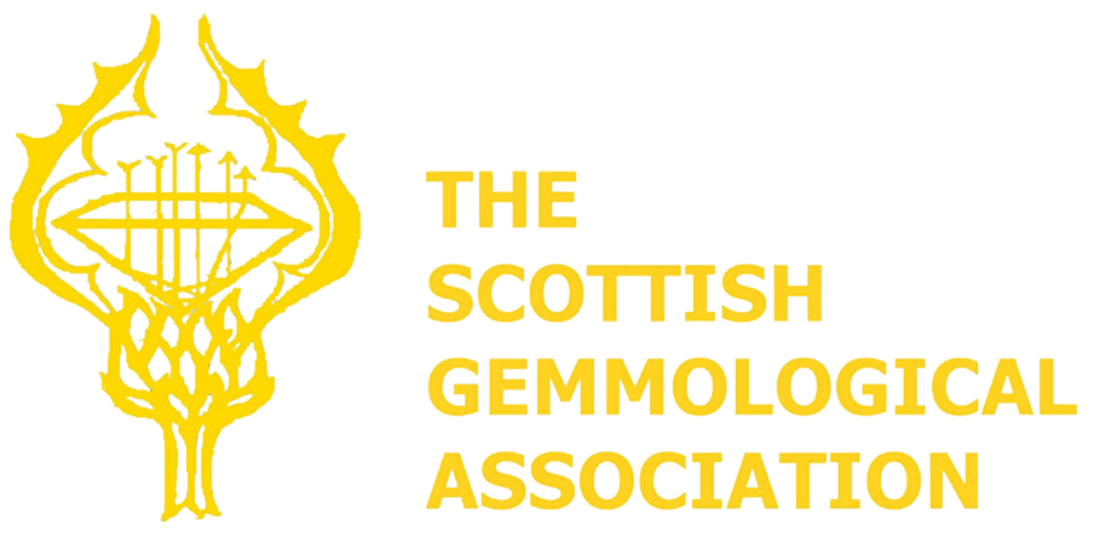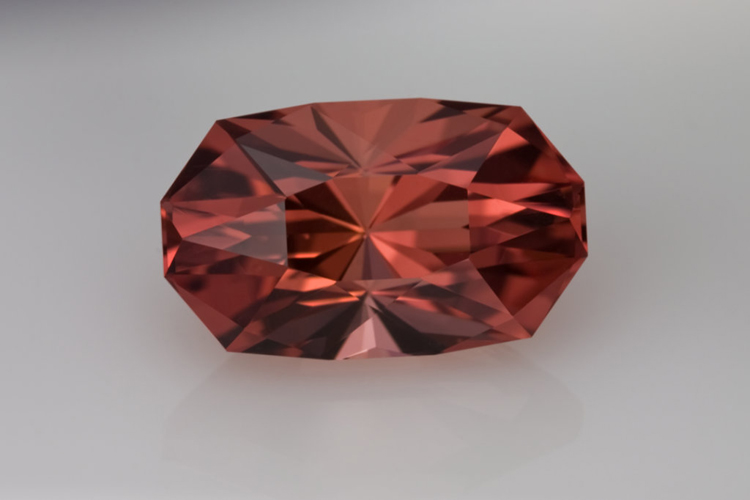The Scottish gemmological Association 2025 conference
Programme
Friday, 2nd. may
6.30 to 7.15pm
Registration and a welcoming drink to be enjoyed with friends old and new
7.15 - 8.15pm
Samantha Lloyd - A Brief Look at the Current State of the Diamond Market
This presentation will be looking at some of the latest changes in the diamond industry from the last year or so, including a brief look at the Russian diamond sanctions.
Also covered will be the current laboratory grown diamond market and general trends in the overall diamond market.
from 8.30p.m Buffet Dinner
This will be a buffet, seated indoors, or optionally outdoors, should there be brave souls and kind weather. Wine is not included.
Saturday, 3rd. may
09.20 - 09.30am Welcome
9.30 - 10.15am
Peter Lyckberg - Treasures of Gem Pegmatites
Granitic pegmatites, with the same composition as granite, but where each mineralgrain had the chance to grew to at least several centimeters to many meters, host a great variety of minerals. Additionally, alkaline pegmatites host many rare minerals of gem quality. Pegmatites form in orogenic (mountain building plate collisions) or non-orogenic geological environments or can form from local anatexis (local melting by tectonic-metamorphic events). The pegmatites themselves can form inside a granite intrusion typically and are in this case located at the roof zone and rims, or can penetrate surrounding rocks in fissures.
The first have various shapes from melon shaped or loaf shaped, to chimney or fracture filling of various thickness from 10 cm to dozens of meters) within its mother granite and if intruded into surrounding rocks typically as fracture fillings forming so called pegmatite veins which can be from a few meters long, more typically tens to hundreds of meters long and in extreme cases 5- 30 km long (ex Afghanistan) Within those pegmatites, cavities from a few centimeter to giant 5-25 meter in size sometimes form and may contain besides quartz, feldspars, micas, large and transparent, colorful crystals of gem quality tourmaline, beryl, topaz, garnets, kunzite, brazilianite.
The largest known gem pocket the author dug measured 85 meter in maximum known dimension but it was not completely excavated. It yielded some 2.5 ton gem heliodor. Other pockets the author dug yielded up to over 7 ton gem topaz. Tourmaline pockets are known to have produced 20-50 ton tourmaline (Morro Redondo and SW Nigeria (pocket serie)). Gem pegmatites may have up to many hundred pockets within a single vein.
Metamorphic events can form pegmatitic veinlets with gem ruby, sapphire, sapphirine, and granitic intrusions are often the heat source and reasons to form also gem quality spinel, ruby and many rare gems in marble hosted rocks such as in Myanmar where the highest quality is found in zones of pegmatitic large grain size calcite with gem quality micas, fluorapatite etc. In principle within any rock units nearby affected by such granitic intrusion for instance in east Africa, Madagascar, Namibia.
10.15 - 10.45am Break
10.45 - 11.30am
Sarah Duncan - Jewels and Gems in the 1930’s
A discussion of the crisis and changes happening in the 1930s amongst the economic turmoil and evolving tastes of the decade. A special focus will be on the 1932 Bijoux de Diamants from Coco Chanel, the integration of “semi-precious” gems into Cartier’s designs and the advent of cultured pearls entering the market.
11.30 - 12.15am
Victor Tuzlukov - The art of faceting. New trends in the gemstone market.
∙Prerequisites for the appearing of new trends in cutting.
∙Additional factors affecting the value of gemstone.
∙Precision cut as the first step to art.
∙What can and cannot be considered the art of gemcutting.
∙"World Heritage" collection: history of creation, description, way to the market
∙Prospects for the development of the art of faceting.
from an image by Andrey Kalinin
12.30 - 1.45pm LUNCH
1.45 - 2.30pm Andreas Pauly - Gemstone Engravings through the Ages
7000 years of Stone and Gemstone Engravings:
-Notes on the Stone Age
-Babylonian Period, 7000 years ago, Center of Glyptics
-Mycenean Culture, Peleponese Era 3000-2000 B.C
-Greek Period 800-500 B.C
-Egyptian Period, first Scarab and large Cameo Carvings 3rd century B.C -The Roman Period, when extraordinary developments took place, firstly Cameos in Agate with several layers appearedlike Gemma Claudia or Gemma
Augustea, portraits of Caesars or antique scenes
-Carolingian and Staufer Period 9th-13th Century A.D first heraldic carvings appeared
-Renaissance, from 1400 A.D (early Renaissance) - 1520 A.D (High Renaissance) plus following period Mannerism until 17th Century - Mid of 18th Century when the art of carving experienced a heyday in several techniques as in portraits, human scenes, animal carvings and Rock Crystal bowls
-Carving Heraldic Patterns and Initials became an integral part of the engravers work
-Paris Period 18th Century -late 19th Century
-Idar-Oberstein period -late 19th Century until today The town started with Idar-Oberstein Carvers who once (1840) emigrated to Paris to learn about Gemstone engraving, but then had to leave France because of the French/German war (1870-71) to develop a large carving industry.
Many skillful Carvers and Mastercarvers made Idar-Oberstein the centre of Gemstone Engraving worldwide. Only in this location can one find all the species of Gemstone Carving that shall be reported on in this lecture
2.30 - 3.15pm
Stuart Robertson - Market Transformation: The Trends Defining the Current Gemstone Trade
This presentation by Stuart Robertson, President of Gemworld International, will examine the primary and secondary factors influencing the supply and demand in the current market. With more than 40 years of industry experience, 27 of which were focused on researching and analyzing price and consumption trends in the colored stone trade,
Stuart will delve into how the green-fallacy helped trigger one of the largest value losses has seen in the jewelry industry of the coloured stone trade into traditionally diamond-centric market channels. The presentation will discuss how once fringe segments of the gem industry are now primary drivers of consumer demand.
The talk will conclude with a look at the supply, demand and pricing of ruby, sapphire, emerald and remaining members comprising the top ten hottest gem varieties of 2025 with particular attention directed to those materials that have now hit their price ceiling and those that currently appear undervalued.
3.15 - 3.45pm Break
3.45 - 4.45pm
Carol Woolton – If Jewels Could Talk, Links Through Time
Carol Woolton will talk about how 25 years of organising big shoots for Vogue led her to write her new book: If Jewels Could Talk which delves into where the urge to decorate ourselves comes from and the cyclical nature of jewellery, as well as the history and cultural significance of jewellery.
She will take us on a whistlestop tour through history via seven items of jewellery: the cuff, brooch, ring, charm, hoop, bead and head ornament, as well as looking at current trends and where things are heading.
7.00 for 7.30pm Pre-dinner drinks
7.30 - Midnight Dinner, Ceilidh and dancing.
This is a Gala Dinner. There is a welcome drink and wine or soft drinks are served with the meal.
After the meal, we will draw our ever popular raffle and festivities may continue on until well into the wee small hours with a Ceilidh band to add to the entertainment!
Sunday, 4th. may
from 9.20am
9.30 - 10.15am Nathan Refro - Photomicrograhy
This topaz contains a monazite inclusion surrounded by a discoid tension crack.
The crack shows vibrant interference colors in reflected light. Field of View: 16.59mm
Inclusions observed in the microscope often give gemmologists tremendous insight into the identity of a gem and the microscope can reveal hidden secrets of the natural world as well as showcase remarkable beauty that would otherwise go unseen. By capturing an image of the microworld of gemstones, we can share our observations to a far broader audience.
This lecture will showcase techniques including the proper use of brightfield, darkfield, shadowing, fiber optic illumination, polarized light and other lighting methods as well as image processing basics including image stacking to get the most out of your photomicrography endeavours. Specialized differential interference contrast microscopy will also be covered.
The presenter will also share several unique and fascinating images captured over the years featuring a wide variety of gem materials.
10.15 - 10.30am. - Report on Gem-A Activity
10.30 - 11.00am. Break
11.00 - 11.45am Helen Molesworth Cartier – Inspiration and Innovation
An inside look from the eye of the Lead Curator of the next jewellery blockbuster exhibition at the V&A: Cartier.
Opening only in April 2025, this exhibition is the largest and most expansive Cartier exhibition in Britain for nearly 30 years. Covering a hundred years of creativity, creation and brilliant business acumen since the three Cartier brothers Louis, Jacques and Pierre took over their grandfather’s business,
Helen will take us through some of the highlights, including royal and aristocratic jewels and gems, some never before seen by the public.
from 11.45am Sunday Awards: Gemmology students and GemSet Competition winners
After the morning's presentations, we will be making awards to Gemmology students and to out Student GemSet Competition winners. The prize winning pieces will be available to view at this time and through lunchtime, and will be featured on our website.
12.30 - 1.30pm Lunch
Workshops from 1.30pm detailed separately
7.00pm Depart the hotel for dinner, returning around 11.00pm.
Traditionally, on the Sunday, we dine at a recommended local restaurant. This year we are returning to The Italian-Kitchen in central Glasgow which is about fifteen miles away.
There will be transport organised to take us to and from the venue. If you personally wish to organise a taxi, you can call Central Taxis on 01236 722772.
Wine and soft drinks will be served with the meal.










